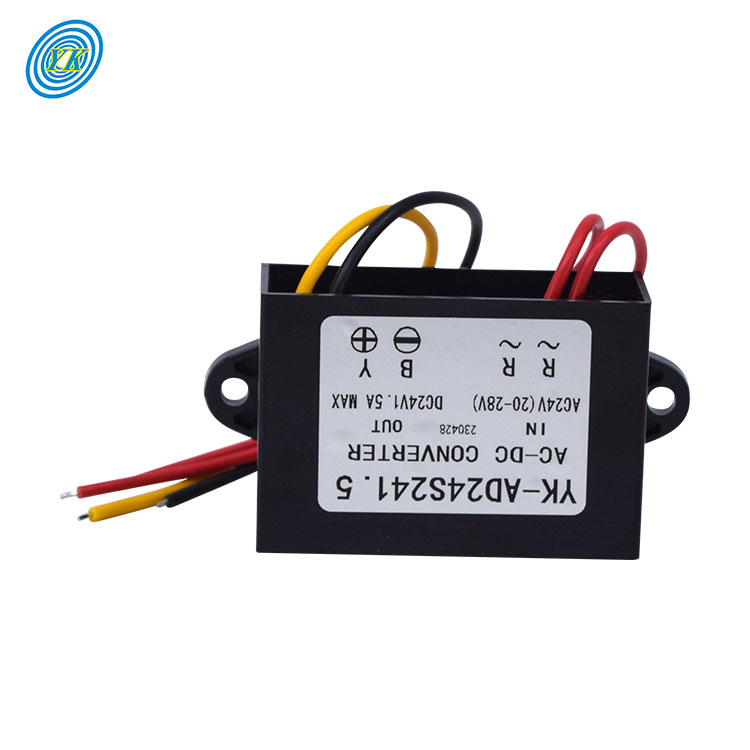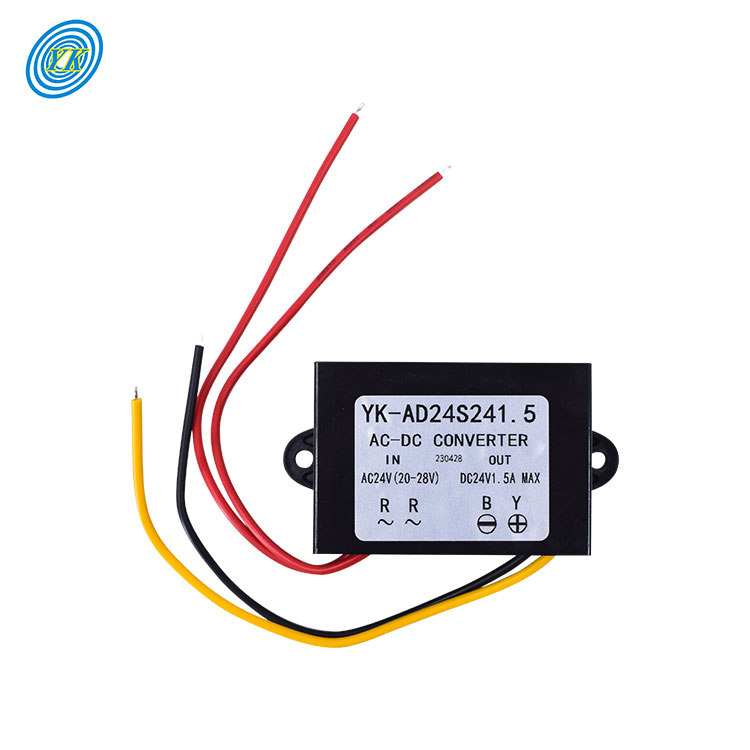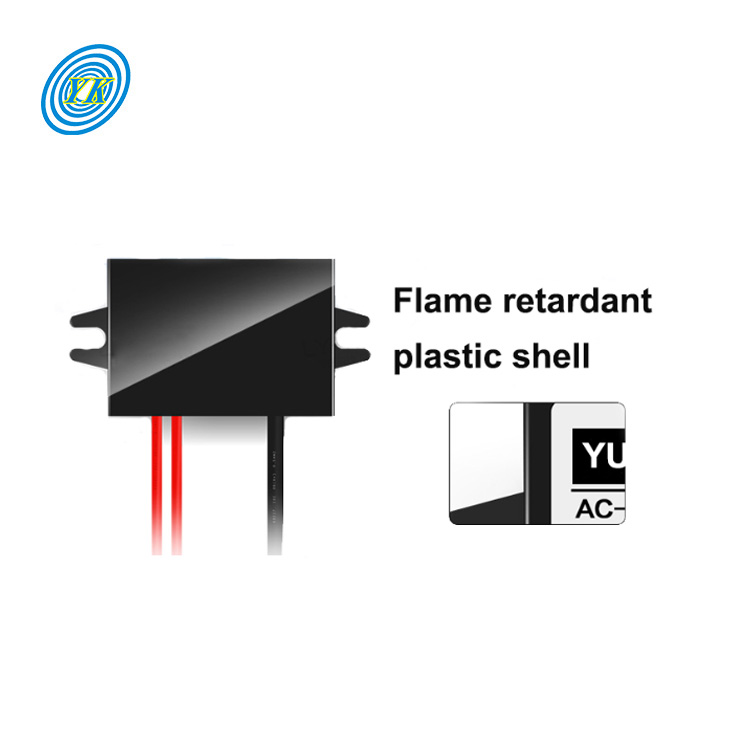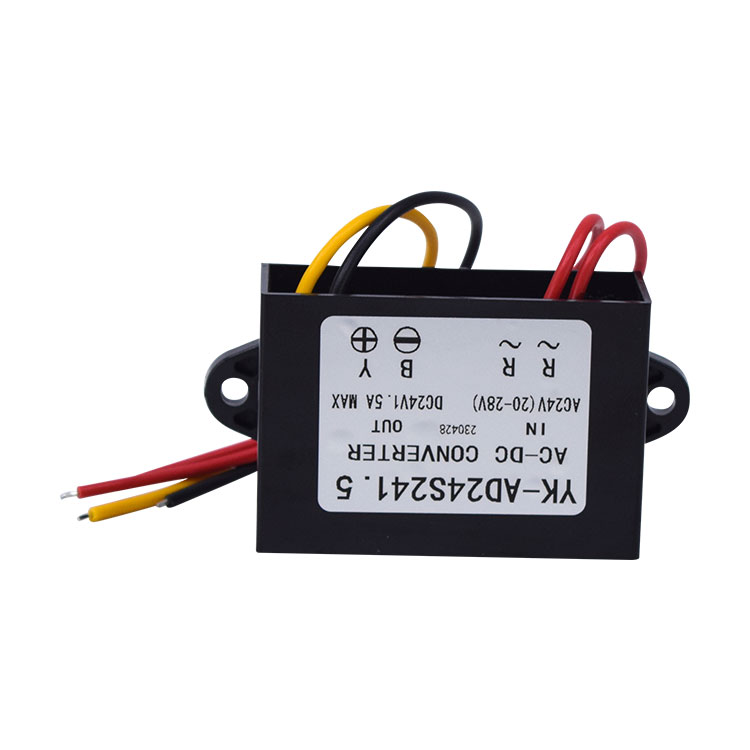News
Exploring AC to DC Converters: Principles, Types, Applications, and Technological Advances
Click: 712 Date: 01/15/2024 3::01::52 PM
Exploring AC to DC Converters: Principles, Types, Applications, and Technological Advances
The fundamental principles of AC to DC conversion involve transforming the alternating current (AC) that is typically supplied to households and businesses into direct current (DC), which is used by a wide array of electronic devices. This transformation process is known as rectification and employs diodes, electronic components that permit current flow in one direction while blocking it in the opposite direction. Rectification comes in two primary forms: half-wave and full-wave. Half-wave rectification uses a single diode to pass only one polarity of the AC, resulting in a pulsating DC that only uses half of the input waveform. Full-wave rectification, on the other hand, utilizes four diodes in a bridge configuration to utilize the entire AC waveform, producing a smoother DC output with less ripple.
After rectification, the output is not purely DC but contains AC components called ripples. To smoothen the DC output and reduce these ripples, a filtering stage, typically comprising a capacitor, is implemented. The capacitor charges when the rectified voltage rises and discharges when it falls, helping to maintain a more constant voltage.
A regulation stage is often required to ensure that the output voltage remains stable despite fluctuations in the input voltage or changes in the load. Voltage regulators stabilize the output by compensating for these variations, maintaining a consistent DC supply necessary for the sensitive electronics that rely on it.
These conversion processes are essential for the operation of a vast array of electronic devices and systems, from small gadgets to large-scale industrial machinery. Advances in converter technology continue to improve efficiency, minimize energy loss, and accommodate the compact form factors demanded by modern electronics.

AC to DC converters are essential components in various electronic devices, converting alternating current (AC) from the electrical outlet into direct current (DC) required by many electronic circuits. Here are five categories of AC to DC converters:
Single-Phase Rectifiers: These are the simplest type of AC to DC converters, commonly using diodes to convert the AC input to a pulsating DC voltage. They include half-wave rectifiers, which use a single diode, and full-wave rectifiers, which use multiple diodes
Bridge Rectifiers: A bridge rectifier uses four diodes in a bridge configuration to provide full-wave rectification. This type is widely used due to its ability to convert the entire AC wave to DC, making it more efficient than half-wave rectifiers
Switched-Mode Power Supplies (SMPS): These are more complex converters that include a switching regulator to convert electrical power efficiently. SMPS can be further divided into various types like buck converters (step-down), boost converters (step-up), and buck-boost converters (can do both)
Power Factor Correction (PFC) Converters: These are used to improve the power factor of the system by aligning the phase of the input current with the input voltage, thereby increasing the efficiency of the power supply system. There are different topologies like bridge, semi-bridgeless, and bridgeless PFC converters
Multi-Stage Converters: These converters use more than one stage to accomplish the AC to DC conversion, which allows for better control, efficiency, and can include features like isolation and regulation. They can combine different types of converters to optimize performance for specific applications
AC to DC converters are integral to a wide array of devices and systems, serving as the bridge between AC power sources and DC-powered electronics. Here are some applications where these converters play a crucial role:
Consumer Electronics: AC to DC converters are fundamental in powering household gadgets such as laptops, smartphones, and tablets through their chargers. They are also found within the power supply units of televisions, audio systems, and other multimedia equipment.
Industrial Machinery: In industrial settings, these converters are essential for operating machinery that requires DC power, ensuring smooth functioning of automation systems, motor drives, and control systems.
Medical Equipment: Medical devices, including life-support machines, diagnostic instruments, and portable medical tools, rely on AC to DC conversion to ensure safe and reliable operation.
Renewable Energy Systems: Converters are used in renewable energy applications such as solar power systems to convert variable AC from solar inverters to stable DC for storage or direct usage.
Transportation Infrastructure: In the transportation sector, converters are used in electric vehicle charging stations, railway systems, and traffic control equipment to convert AC from the grid to the required DC voltage levels.
These applications highlight the ubiquity and importance of AC to DC converters in both our daily lives and critical infrastructure.

When designing AC to DC converters, it's crucial to consider several technical aspects that impact the converter's performance, longevity, and suitability for the intended application. Here are some key design considerations rephrased from the provided sources:
Component Layout and Placement: The positioning of components on the PCB is essential. Strategically arrange components to minimize trace lengths, thereby reducing potential noise and electromagnetic interference. Ensure that parts that dissipate heat, like diodes and voltage regulators, have proper airflow or cooling mechanisms.
Trace Dimensions and Grounding: The traces on the PCB must be wide enough to handle the expected current without excessive heating. Utilize a solid ground plane to establish a consistent low-impedance path for the return current, which aids in noise reduction.
Heat Management: To manage heat effectively, components that generate significant heat should be placed in locations with good ventilation. Heat sinks, thermal vias, and other cooling techniques can be employed to help dissipate heat efficiently.
Electromagnetic Interference (EMI) Considerations: Implement shielding strategies to minimize the impact of EMI on the circuit. This could involve adding conductive barriers or making use of grounded copper pours on the PCB.
Component Selection: Choose components that are appropriate for the conversion process, such as rectifier diodes, capacitors for filtering ripple voltage, and transformers for stepping down the input voltage. The ratings of these components, such as voltage, current, and power, should align with the converter's requirements.
Each of these considerations plays a critical role in the design and implementation of an effective and reliable AC to DC converter. By addressing these areas, designers can create converters that meet the necessary performance criteria while also being robust and efficient.
Recent advancements in AC to DC conversion technology have been marked by significant strides in enhancing the efficiency and performance of power electronics and electric machines. These improvements are driven by the growing demand for electric vehicles (EVs), which require robust and efficient conversion systems to manage battery charging and energy distribution. The following points highlight some of the key areas of progress in converter technology:
Innovative Electric Machine Designs: Efforts have been made to increase the power density and reduce the cost of electric motors, which are crucial for EV propulsion systems. Novel motor designs are being explored to achieve these goals, including the use of advanced materials and manufacturing techniques.
Enhanced Inverter Technologies: Inverters, responsible for converting DC to AC, are seeing new topologies that improve efficiency and can handle higher temperatures while maintaining high reliability. These innovations are vital for managing the heat generated in high-power applications such as fast EV charging.
Converter Efficiency Improvements: Converters are being designed to reduce the number of components and integrate multiple functions, leading to smaller, lighter, and more cost-effective solutions. This is particularly important for onboard chargers and power management systems in EVs.
Thermal Management Solutions: As power densities increase, effective thermal control becomes more critical. Innovations in packaging technologies are being developed to improve heat dissipation, which is essential for the longevity and reliability of power electronics and electric machinery.
Integrated Motor/Inverter Systems: The integration of motors and inverters into single units is an area of significant interest. Such integration can lead to reductions in size, weight, and cost, as well as improvements in overall system performance.
Collectively, these advancements are contributing to the development of more efficient, reliable, and cost-effective AC to DC conversion systems that are essential for the widespread adoption of electric vehicles and the realization of a more sustainable transportation future.

